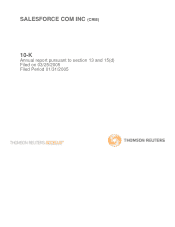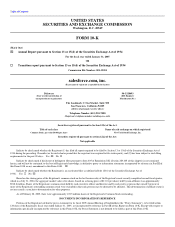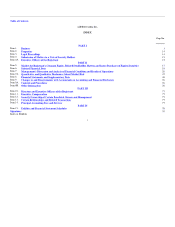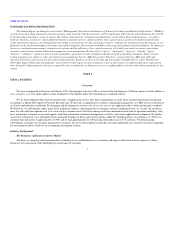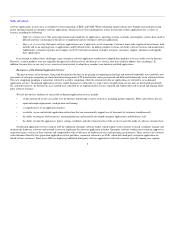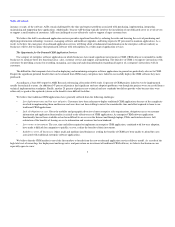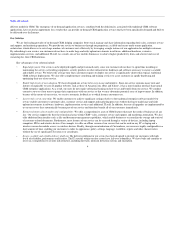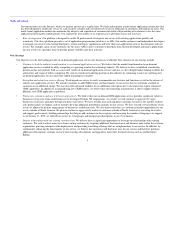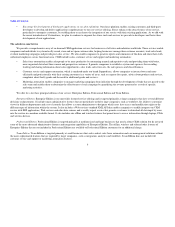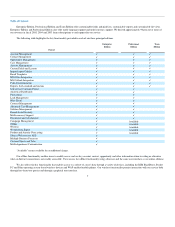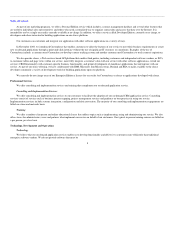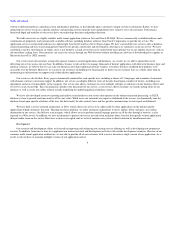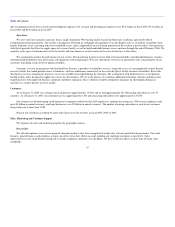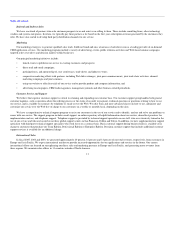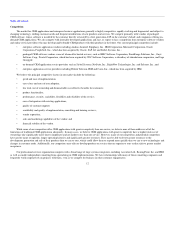Salesforce.com 2004 Annual Report Download - page 5
Download and view the complete annual report
Please find page 5 of the 2004 Salesforce.com annual report below. You can navigate through the pages in the report by either clicking on the pages listed below, or by using the keyword search tool below to find specific information within the annual report.
Table of Contents
software applications in such areas as enterprise resource planning, or ERP, and CRM. While technology improvements have brought increased processing
power and functionality to enterprise software applications, businesses have been challenged to realize the benefits of these applications for a variety of
reasons, including the following:
• Difficulty of deployment. The increasing number and complexity of applications, operating systems, networks and computer systems have made it
difficult and time consuming for businesses to implement and use enterprise software applications.
• High cost of ownership. Enterprise software applications carry a high total cost of ownership. Customers must make significant investments, both
initially and on an ongoing basis, in applications and IT infrastructure, including computer systems, networks, software licenses and maintenance.
Additionally, customers typically must employ costly IT staff and consultants to deploy, integrate, customize, support, administer and upgrade
these applications.
In an attempt to address these challenges, many enterprise software application vendors have adapted their products to be accessible over the Internet.
However, as these products were not originally designed to be delivered over the Internet as a service, they have failed to address these challenges. In
addition, because they are not easy to use, users have been hesitant to adopt these complex, non-intuitive installed applications.
Emergence of On-Demand Application Services
The pervasiveness of the Internet, along with the dramatic declines in the pricing of computing technology and network bandwidth, have enabled a new
generation of enterprise computing in which substantial components of IT infrastructure can be provisioned and delivered dynamically on an outsourced basis.
This new computing paradigm is sometimes referred to as utility computing, while the outsourced software applications are referred to as on-demand
application services. On-demand application services enable businesses to subscribe to a wide variety of application services that are developed specifically
for, and delivered over, the Internet on an as-needed basis with little or no implementation services required and without the need to install and manage third-
party software in-house.
We feel that the key attributes of successful on-demand application services include:
• a fully outsourced service accessible over the Internet and through a variety of devices, including laptop computers, PDAs and wireless devices;
• rapid and simple deployment, configuration and training;
• a comprehensive set of application features;
• a scalable, secure and reliable application architecture that can economically support tens of thousands of customers simultaneously;
• the ability to integrate with businesses' existing third-party and internally developed enterprise applications and databases; and
• the ability to tailor the appearance, policy settings, workflow and other characteristics of the service to meet the needs of a diverse customer base.
On-demand application services contrast with the traditional enterprise software model, which requires each customer to install, configure, manage and
maintain the hardware, software and network services to implement the software application in-house. Enterprise software vendors must maintain support for
numerous legacy versions of their software and compatibility with a wide array of hardware devices and operating environments. These services also contrast
with solutions offered by first-generation application service providers, commonly referred to as ASPs, which host third-party enterprise applications on
behalf of their customers. Since these ASPs are deploying traditional third-party software applications with each customer typically running on a separate
2

